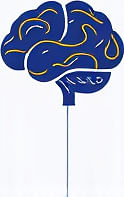Building Effective Routines for ADHD in Home Offices
 by Lilian Nienow
by Lilian Nienow
Discover practical strategies for creating routines that support ADHD in remote work settings. Learn how structured habits can improve focus, reduce overwhelm, and enhance productivity while maintaining balance at home.

Remote work offers flexibility, but for adults with ADHD, it can present unique challenges. Establishing routines becomes essential to manage distractions and maintain productivity. One key aspect is starting with a clear morning ritual. This helps set the tone for the day and reduces the mental effort needed to begin work.
The Importance of Structure for ADHD
In a home office, the lack of a traditional schedule can lead to inconsistency. Routines provide a framework that supports focus and minimizes decision fatigue. For example, setting fixed times for tasks can make it easier to stay on track. ADHD often involves difficulties with executive function, so simple, repeatable habits are particularly helpful.
Consider beginning each day with a short preparation period. This might include organizing your workspace before starting work. Such practices can create a sense of control and reduce anxiety. Another benefit is that routines help with transitions, like moving from work to personal time, which is crucial for overall well-being.
Step-by-Step Guide to Creating Routines
To build effective routines, start by identifying your most productive periods. Many people with ADHD find they have bursts of energy at specific times, so align tasks accordingly. For instance, tackle high-concentration work during peak focus hours.
Here are some practical steps:
- Define your core daily activities, such as checking emails or attending meetings.
- Use timers to break the day into segments, allowing for short breaks to prevent burnout.
- Incorporate physical movement, like a quick walk, to refresh your mind.
Once you have a basic structure, test it for a week and adjust as needed. Flexibility is important, as rigid plans can sometimes increase stress. Remember, the goal is to support your natural rhythms rather than force unnatural ones.
Tools and Hacks for Daily Implementation
Several simple tools can aid in maintaining routines. Apps that send reminders or track habits are useful for keeping on schedule. For example, a basic planner app can list daily goals and provide notifications. This approach helps with accountability without overwhelming the senses.
Visual cues are another effective hack. Place sticky notes or a whiteboard in your home office to outline the day's routine. This visual aid serves as a gentle prompt and reduces the need for constant mental reminders. Home office setups can be optimized by designating specific zones for different activities, like a clear desk for focused work and a comfortable area for breaks.
Breaks are vital for recharging. Short, regular pauses can improve concentration and prevent fatigue. Try the Pomodoro technique, working for 25 minutes followed by a five-minute rest. Over time, these habits can build resilience and make remote work more sustainable.
Overcoming Common Obstacles
Distractions at home, such as household chores or family interruptions, can disrupt routines. To counter this, communicate your schedule with those around you and set boundaries. For instance, use a 'do not disturb' sign during focus periods.
Procrastination is another common issue. Break tasks into smaller, manageable steps to make them less intimidating. This method, often called task chunking, can turn overwhelming projects into achievable actions. If hyperfocus occurs, which is common with ADHD, set alarms to remind you to shift activities and maintain balance.
Building routines also involves self-compassion. It's normal to have off days, so view setbacks as learning opportunities rather than failures. Over time, consistent practice can lead to greater stability and confidence in your work environment.
Integrating Work-Life Balance
A well-rounded routine extends beyond work hours. Include time for relaxation and hobbies to prevent burnout. For example, end your workday with a wind-down activity, like reading or light exercise, to signal the transition to personal time.
This balance is key for long-term success. By prioritizing rest and enjoyment, you can sustain productivity without sacrificing well-being. Adults with ADHD often thrive when routines incorporate elements of joy, so personalize your plan to include activities that motivate you.
In summary, creating routines for ADHD in home offices requires patience and experimentation. With the right strategies, remote work can become a supportive space that enhances focus and overall life quality.
